The Playskool Express was the first train in the Playskool Express line and was available from 1988-1989 at an MSRP of $54.99 (which was a lot of money at the time). It included a locomotive, flat car with three wooden crates, a gondola car with three “barrels” that looked like concrete pipes, a caboose, a barrel loader, a flat bed truck and 19 feet of track with accessories.
The locomotive was based on older steam engines and used a 0-4-2 wheel arrangement, which was not something commonly used in American steam engines. It came molded in a dark green color with a red chassis, roof, & front end, the wheels we’re a standard black, and all of the exterior mechanical pieces were molded in a bright yellow (on/off switch, rerailer, wheel arm, transmission control bar). This locomotive was powered by four “c” cell batteries and was billed as being able to pull three cars behind it. This engine had three gears that we’re controlled from a bar at the rear of the train; forward, neutral, and reverse. When the train was on a headlight mounted in the front of the locomotive would light up and was tied into the internal control board that controlled the motor that ran the wheels. The locomotive also had a special coupler that was different from the other cars, consisting of a pocket that was part of the chassis.
The flat and gondola cars were essential the same underneath and featured two sets on stationary single axle trucks that were at the perfect with apart to make the curve of the Playskool Express track. Each car could hold three barrels or crates or any combination of the two. The load surface of the flat car has three square impression to help hold the crates in place, but the barrels will also fit when they are laid on their ends.
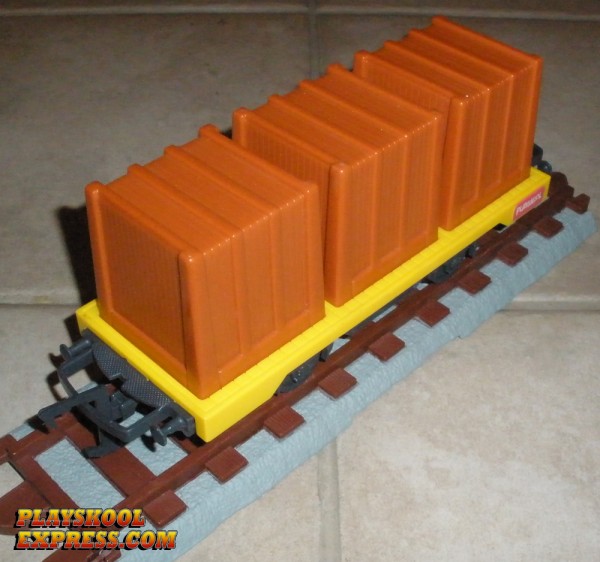 |
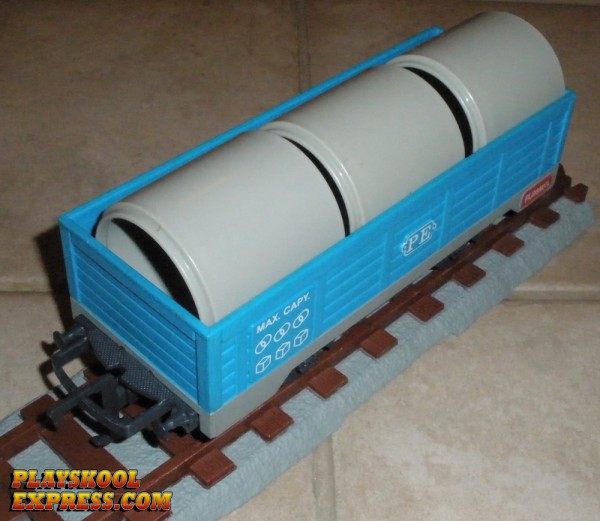 |
The caboose has the same standard undercarriage as the flat and gondola cars, but the top of the car is very different. It has seating inside for two figures, which is interesting since the train not only didn’t come with figures, but none were available until 1989 with the Super Express and Accessory cars. The caboose also featured a “pop off” roof so that you could access the compartment on the inside and display figures and railing so that figures could ride outside of the car on either the front or back.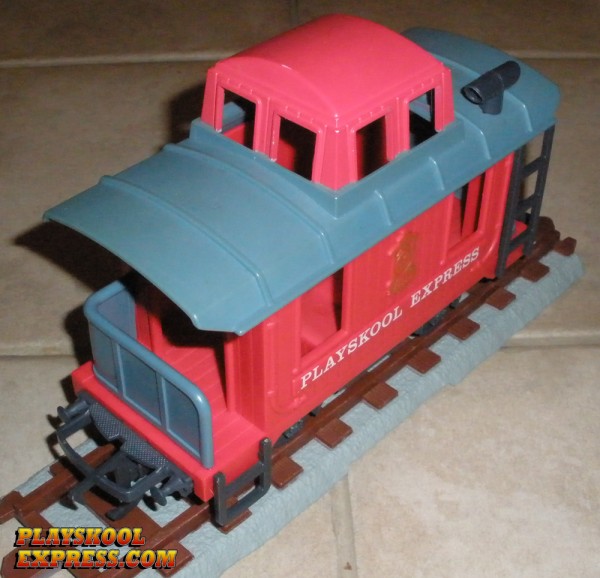
The set also included a “flat-bed” truck and a barrel loader tower. The truck is not quite into scale for the train and is an extremely simple toy. The loader has a switch mechanism that lets you control the release of the barrels. The track has many pieces including a on ramp, an intersection, a crossing gate, an on/off switch set, a left turn out, straight and curved sections, and all of the accessories you’d need for these sections (crossing sign, crash barrier, etc.).
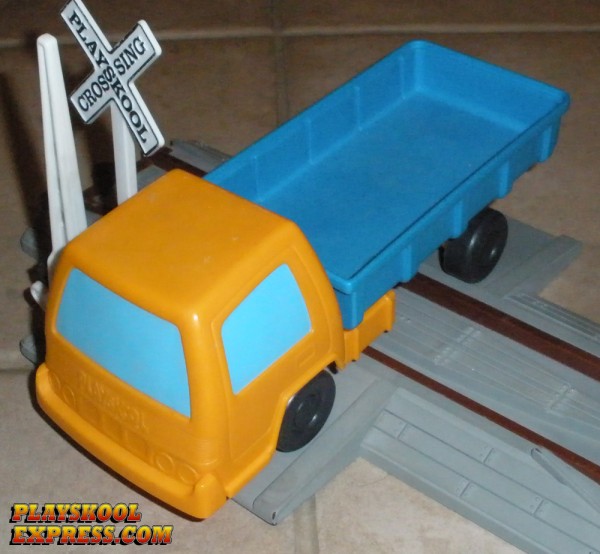 |
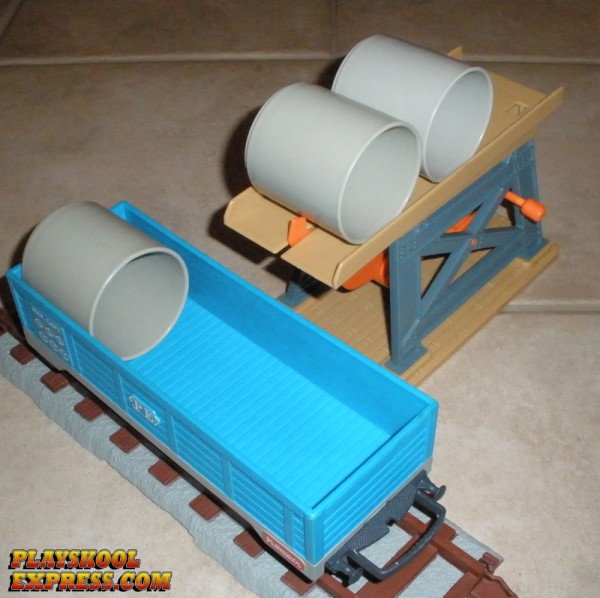 |


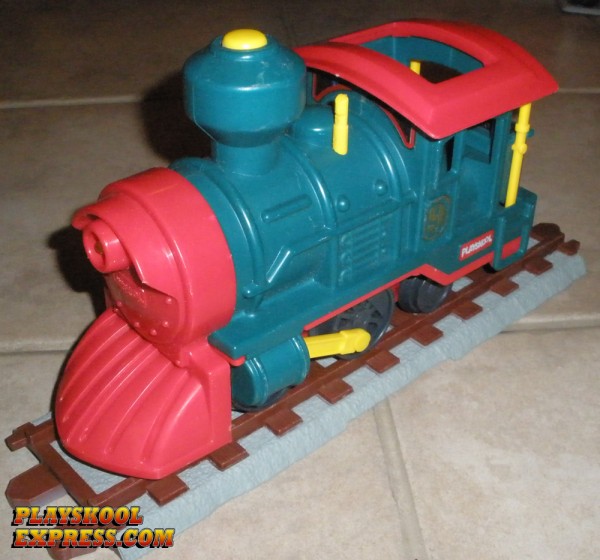
I have collected five of the engines. One has been working around our Christmas tree for about five years. The grandchildren love it. This year our new two-year-old has learned to operate the yellow button on top that makes it start and stop.
I found some non working engines on ebay at halfway reasonable prices and wound up buying four. One shell was beyond repair, so it became the parts engine. I was able to get the other four running – so far, like new!
My purpose in all this is to say that often, the board and wiring are burned while the motor is good, and other times, vice versa. The bad board and wiring can be exchanged for good ones. The same with the motor. Sometimes the electrical continuity path must be cleaned of corrosion.
The motor, itself can be taken apart – carefully! – and the brushes sanded clean – CAREFULLY! – or this operation could destroy the motor!
It is even possible to resolver the wires to the circuit board, but care must be
taken not to contact anything else on the board with the solder.
I hope this helps.
HjA